During WWII, aviation saw its greatest period of innovation, even though it was due to the thousands of dogfights and numerous aerial bombardments that took place.
After the United States became involved in the war, production of new aircrafts skyrocketed. Allied bombers were now constantly airborne. Everyone did the thing he was best at: The US Army Air Force bombed Germany during daytime, the Royal Air Force and the air forces of the British Commonwealth did the same at night. Factories, barracks, bridges, infrastructure... Everything was a possible target.
Late in the evening, large numbers of aircraft took off from dozens of airfields in southern England. Until they were well above the North Sea, the bombers were accompanied by RAF fighter planes. As soon as the maximum range of the fighters was reached, the bombers were on their own. On the way to their target they had to cope with anti-aircraft fire, bad weather, technical defects and enemy fighter planes.
The evening of 27 April 1944 was no exception. 12 formations of 12 bombers each took off from several airbases. Their target for that night: Montzen rail yard, southwest of Aachen, one of the most important marshalling yards in Belgium, and an important transport link between the German Ruhr area and Antwerp, one of the primary North Sea harbours.
The bombings were quite successful. Most aircraft made it to their target and dropped their load, after which they turned back. A short while into the return flight, the formation was intercepted by German fighter planes. That night 15 bombers out of 144 were lost.
One of the stricken aircraft was a Handley Page Halifax. This plane, registration number 243, was with 434 Squadron of the Royal Canadian Air Force. It was nicknamed ‘the Bluenose’, because its captain was from Nova Scotia.

Handley Page Halifax
The Halifax was shot down by a twin-engine JU-88 fighter from 1. Gruppe, Nachtjagdgeschwader 1 (1.NJG/1) (1st group, 1st night fighter squadron). Different sources contradict each other about who delivered the final blow to the bomber, but it was either Oberleutnant Georg Fengler or Hans Schaufer. The severely battered Bluenose crashed near Cartils, between the towns of Eys and Wittem.
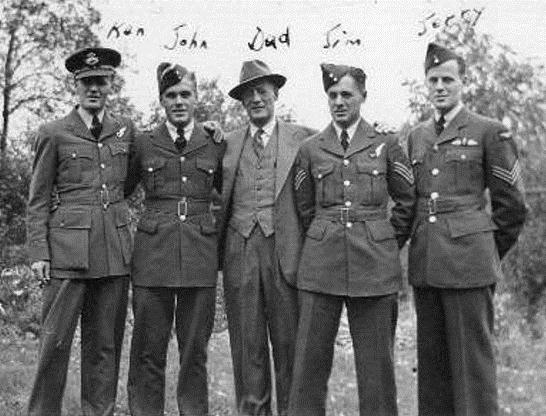
(left to right) Snow, Arscott, Arscott's father, Cownden and Maffre. Meek,
Fuller and Stacey are not in the picture.
Four of seven crew members were killed either during the attack or in the crash:
G.F. Maffre, the captain
G.W. Snow, the radio-operator
Sergeant R.A. Meek, the mid-upper gunner
Petty Officer V.J. Cownden, the tail gunner
The three remaining men were able to escape the aircraft and to use their parachute. They all landed in different places.
The flight engineer, sergeant A.W. Fuller, was spotted by a German patrol. He was arrested immediately after landing, and taken away as prisoner of war. He was transported to Stalag Luft VI, north of Königsberg (nowadays the Russian city of Kaliningrad), in former East Prussia. His fate remains unknown.
Two other soldiers were more fortunate.
The navigator, Flying Officer A.G. Stacey, was able to escape. The 21-year old soldier came into contact with the Dutch resistance. They took him south, a short distance every night. He ended up in De Planck, just south of the Belgian border. Here he found refuge until the Americans arrived.
Flying Officer J.E.J. Arscott, the bomb aimer, had been injured in the German attack on his airplane. Besides, he hit a cow while landing his parachute. John Arscott found a safe house in Gulpen, where he awaited liberation as well.
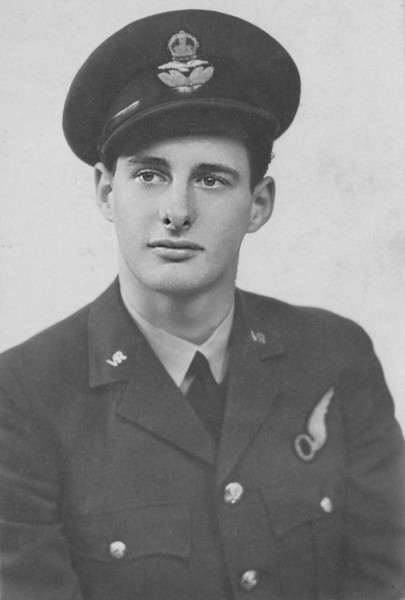
John Arscott
The four killed airmen were buried later in Maastricht, amidst several soldiers from the UK, Canada and Australia. Also there are five British crew members who were killed in February 1943, when their Halifax also crashed near Wittem.
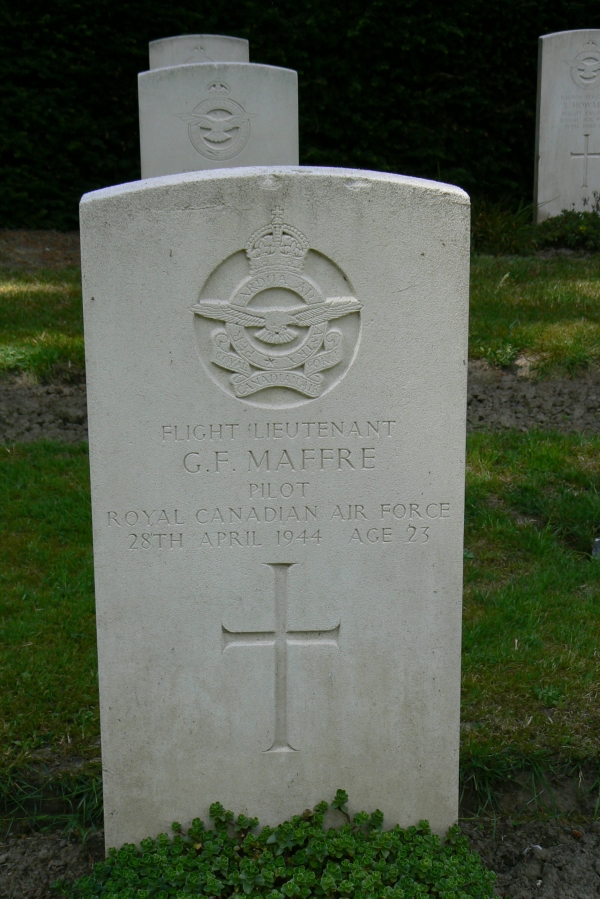
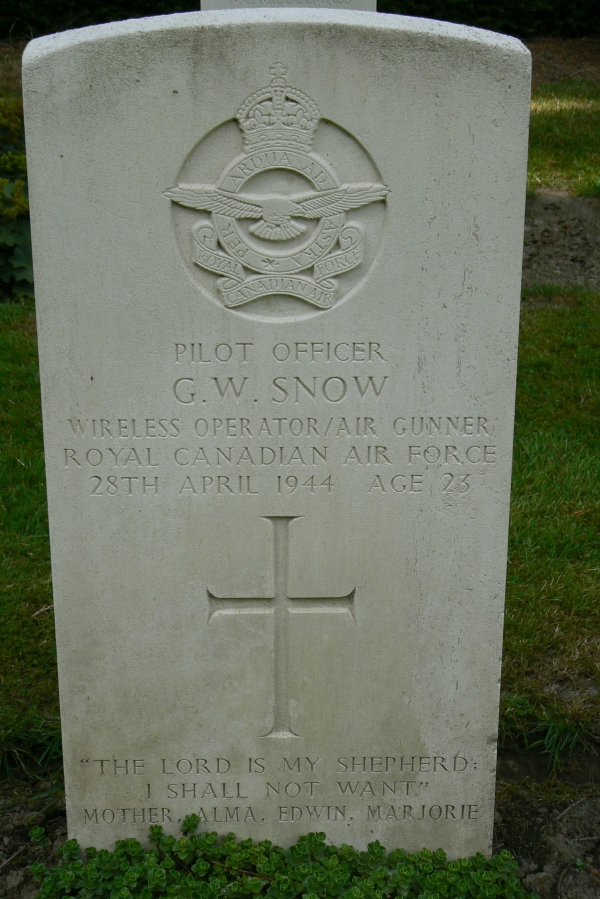
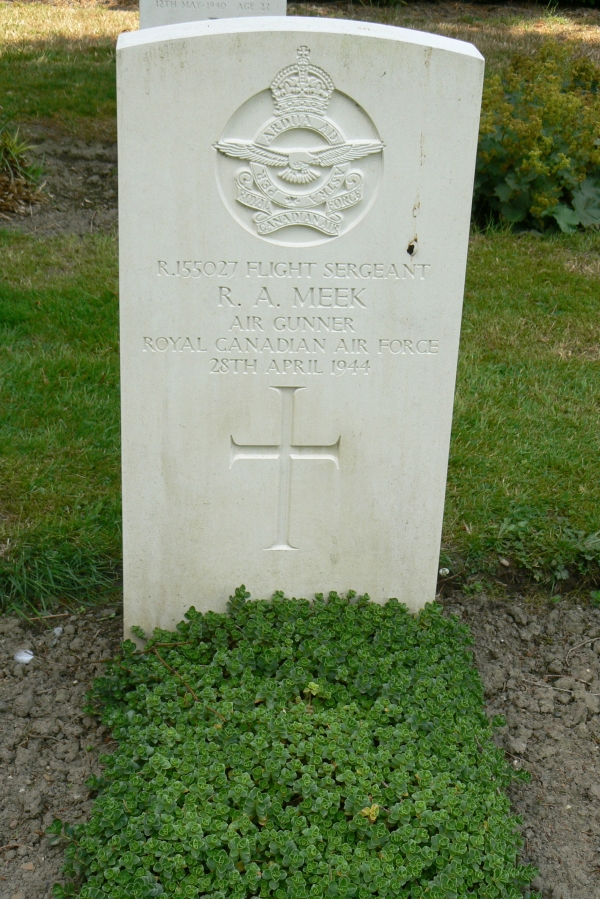
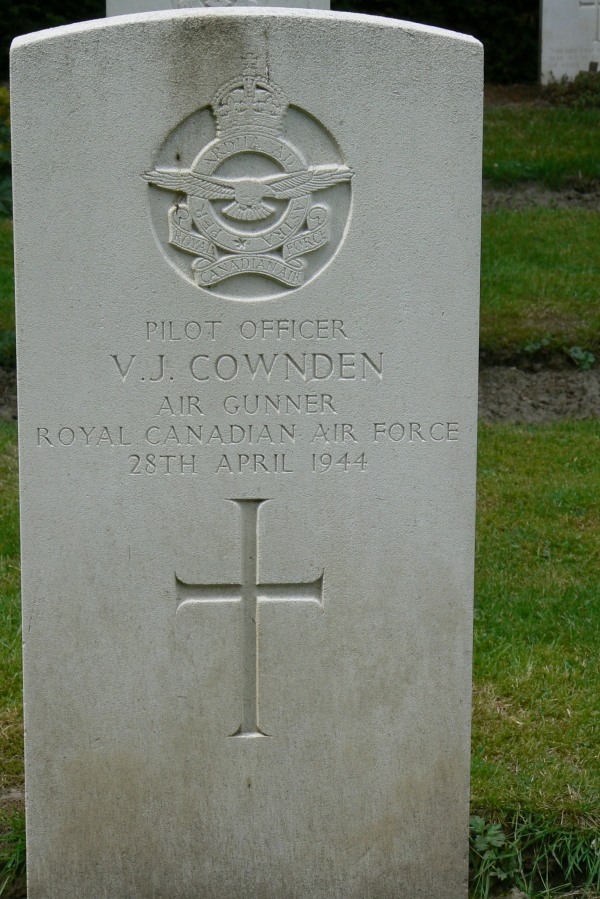
The monument was revealed on 27 April 1994, exactly 50 years after the fatal crash. There is a rock with the names of the victims. There are also parts of an aircraft, but it’s not certain they belong to the Bluenose.
F.O. Gordon Stacey visited the memorial site for his fallen comrades in 2009, at the age of 86. During this visit he was accompanied by geocacher ON9CC, who not only provided me with extensive information about this place, but who also had the luck and the honour to be the first to find this cache!
At the given parking coordinates you can find another WWII memorial. On this stone there are the names of people from southern Limburg who were killed during the war. There are 43 names: 22 soldiers, 2 civilians and 19 resistance people.
This cache is part of a series. The caches are:
'40-'45: Kapelaan Berix (GC2PEZJ) (in English) '40-'45: Veer Berg-Meeswijk (GC2PEXA) (in English) '40-'45: Brug Obbicht (GC2PER6) (in English) '40-'45: Sluis Born (GC2PEP0) (in English) ’40-’45: Brug Roosteren (GC2TV5X) (in English) '40-'45: Sittard War Cemetery (GC2TV9R) (in English) '40-'45: Staff Sergeant Booher (GC2TQC1) (in English) '40-'45: Jürgen G. Krohnke (GC2X5V3) (in English) '40-'45: RCAF Bomber Crew (GC2X60A) '40-'45: Schepenkerkhof (GC2X6KF) (in English)All caches contain a bonus number. When you find all 10 of them, you can search for the bonus cache (GC2X6MV).
Did you find one or more caches in the series before there were bonus numbers added? Send me a message, telling which caches you’ve found and on which date. I will try to send you the bonus numbers as soon as possible!
Hint:
Climb and crawl up along the right side. Spoiler photo
Geen opmerkingen:
Een reactie posten